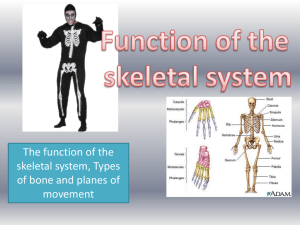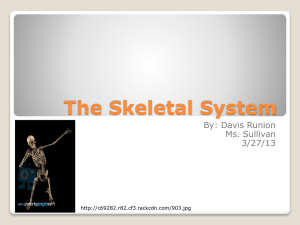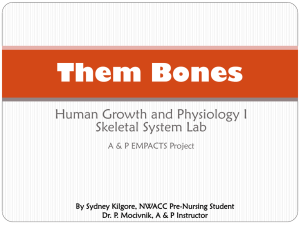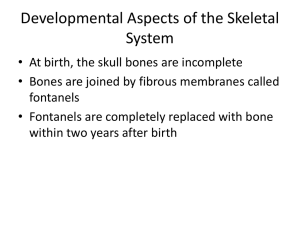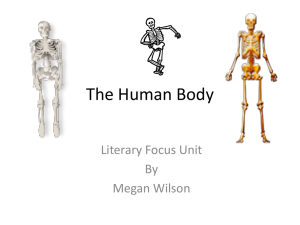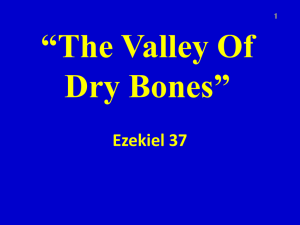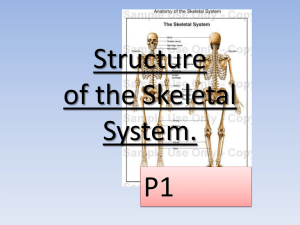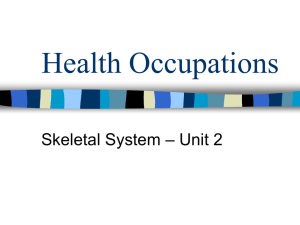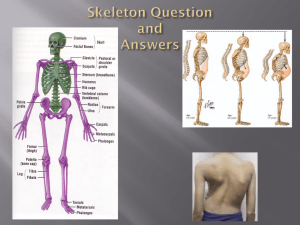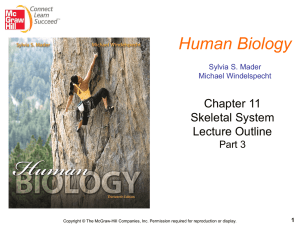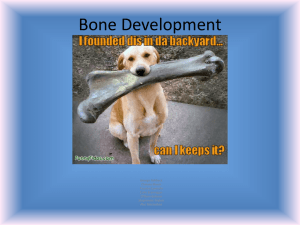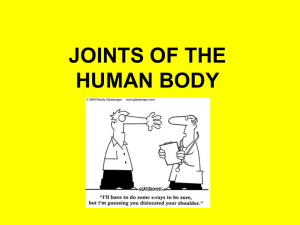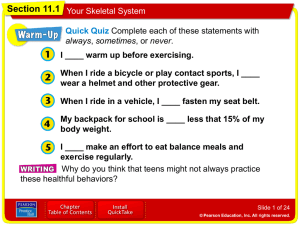Chap 7a Powerpoint
advertisement
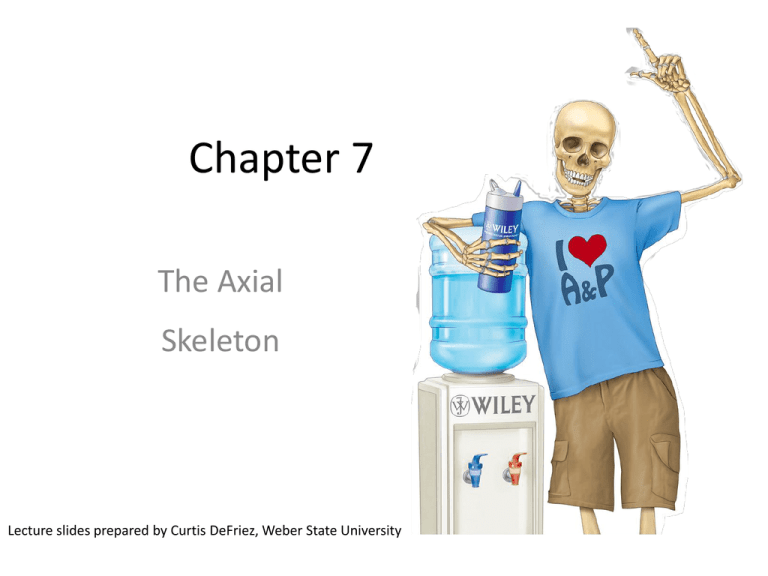
Chapter 7 The Axial Skeleton Lecture slides prepared by Curtis DeFriez, Weber State University Divisions of the Skeletal System • The human skeleton consists of 206 named bones grouped into two principal divisions: – Axial skeleton – Appendicular skeleton • In this graphic, the axial skeleton is highlighted in blue, while the appendicular skeleton constitutes the remainder. Divisions of the Skeletal System • The axial skeleton consists of the bones that lie around the longitudinal axis of the human body: – Skull bones, auditory ossicles (ear bones), hyoid bone, ribs, sternum (breastbone), and bones of the vertebral column • The appendicular skeleton consists of the bones of the upper and lower limbs (extremities) and the bones forming the girdles that connect the limbs to the axial skeleton. Divisions of the Skeletal System Interactions Animation • The Skeletal System You must be connected to the internet to run this animation Types of Bones • Each of the 206 named bones of the axial and appendicular skeleton can be placed in one of 6 broad classifications based on their embryological origins and their anatomical characteristics. Types of Bones • Long bones are greater in length than in width and are often slightly curved for the purpose of weight bearing. – Examples include the femur, tibia, fibula, humerus, ulna, radius, metacarpals, metatarsals, and phalanges. • Short bones (cube-shaped) include the carpals & tarsals. • Flat bones are thin and composed of two nearly parallel plates of compact bone enclosing a layer of spongy bone. – They include the cranial bones, ribs, sternum, scapulae, and clavicles. Types of Bones • Irregular bones include complex shapes like the vertebrae and some facial bones. • Sesamoid bones vary in number and protect tendons from excessive wear: – The best example is the patella. – Sesamoid bones can develop fractures due to friction, tension, and stress. Types of Bones Sutural bones, also known as Wormian bones, are small extra bone plates located within the sutures of cranial bones. – These are found as isolated examples, and although unusual, they are not rare. Bone Markings • Bones have characteristic surface markings structural features adapted for specific functions. • There are two major types of surface markings: – Depressions and openings • Allow the passage of blood vessels and nerves • Form joints – Processes • Projections or outgrowths that form joints • Serve as attachment points for ligaments and tendons Bone Markings • While a process is any projection of bone (large or small), a spinous process is a slender projection from a vertebrae. • A foramen is an opening in bone through which blood vessels and/or nerves pass. Bone Markings • If a bony process is large, round, and articular, it might be called a condyle. The condyles of the humerus are the Trochlea and the Capitulum. • An epicondyle is a bony protuberance above a condyle. • A fossa is a shallow depression in bone. Bone Markings • A tubercle is a small rounded projection. • A tuberosity is a large bony prominence that is not articular. Bone Markings • A meatus is a tube-like canal. The external auditory meatus is a good example. • The trochanters are two very large bony projections on the femur.


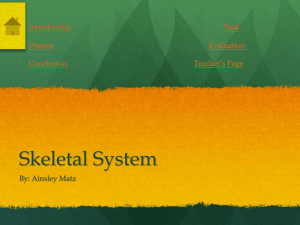
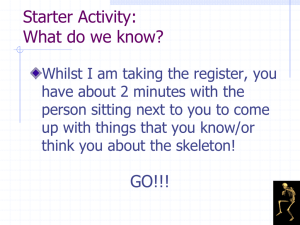

![Presentation1_THE_SKELETONYEAR_11[1]](http://s2.studylib.net/store/data/005409642_1-afa8ff9720521661d1d424bd55e41da1-300x300.png)
